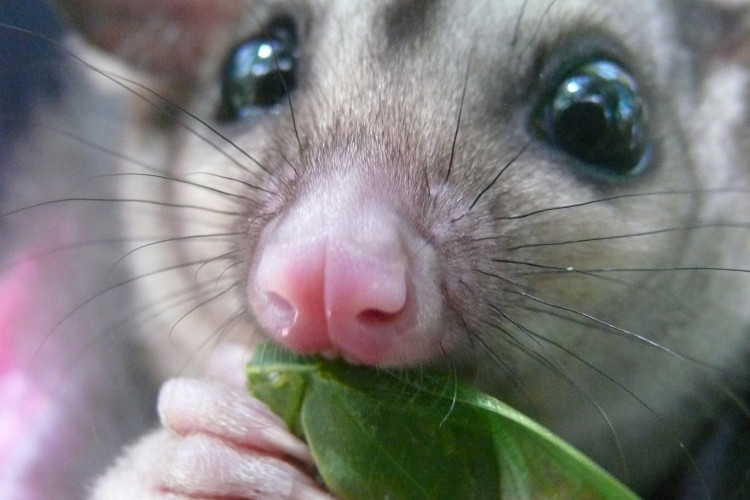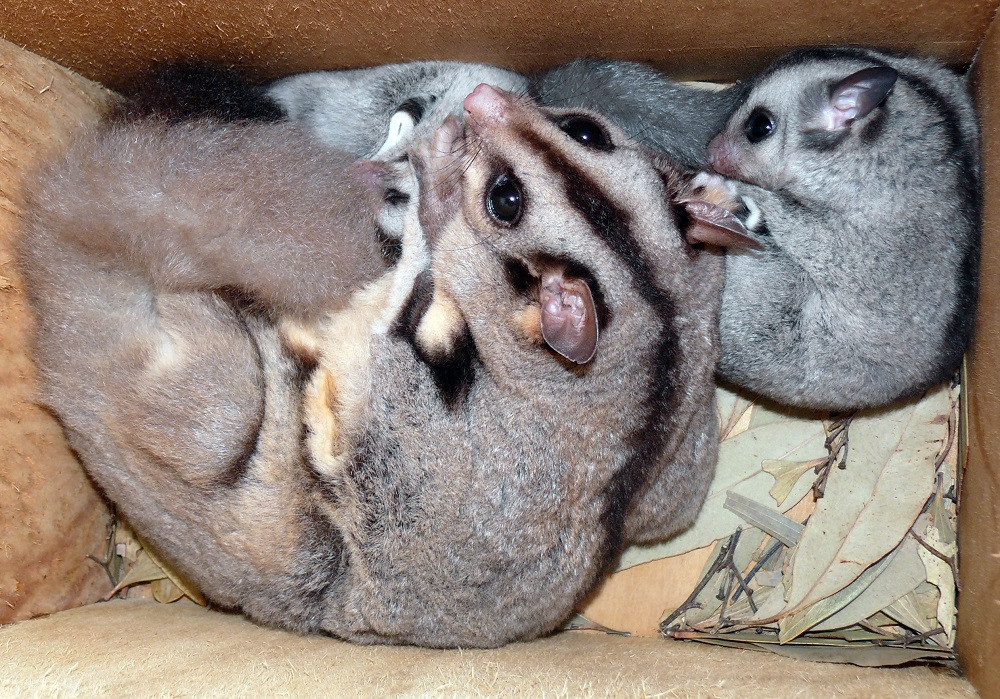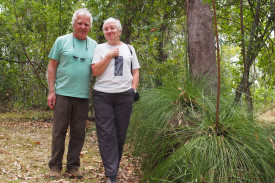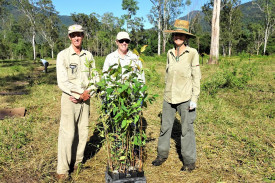Community
15 July, 2021
Tree-planting for ‘Warrami’ the mahogany glider
Hundreds of trees are being planted on a property where a mahogany glider was rescued from a barbed-wire fence - to become the face of an endangered species that is struggling for survival.

‘Warrami’ the glider was found entangled in barbed-wire 11 years ago and spent months recovering with wildlife carers. A tropical cyclone then ruined his chances of a quick release into the wild when it destroyed glider habitat in the Tully-Townsville region – but this led to an unusual and heart-warming turn-of-events.
Wildlife carers Daryl Dickson and Geoff Moffatt were given special permission to introduce Warrami to a female glider, also recovering from barbed-wire injuries, and the pair bonded and produced two young before being released into recovering glider habitat two years after Warrami was first brought into care.
At the tree-planting event recently, Ms Dickson said it was wonderful to see the place where Warrami grew up and to help increase glider habitat on the property.
Mahogany gliders are listed as ‘endangered’ and are only found in a fragmented strip of woodland between Tully and Ollera Creek, south of Townsville. The tree-planting event is one of several happening on grazing properties to connect sections of woodland as part of a $1.5 million project being delivered by Terrain NRM through funding from the Australian Government.

Terrain’s Jacqui Diggins said the property, located south of Tully in an area known as Warrami, was at an ecological pinch-point where rainforest formed a barrier to gliders between national park and farming land.
“In the past, the woodlands would have continued through areas like this around the national park where the habitat changes to rainforest, but they were cleared for farming,’’ she said. “This property is an ideal connection point. We’ve planted 600 trees, and another 2000 will go into the ground to connect glider habitat to the north and south.”
Mahogany gliders can glide up to 30 metres on average. It’s often not far enough in cleared land, with barbed top wires the most common reason gliders come into care.
“Replacing top wires and connecting relatively small sections of land can make a huge difference,” Ms Diggins said. “It helps gliders to move between habitat areas for feeding and it also helps in the flow of genes for this species.”
Property owners Deb Van Beek and Royd Blunden say the support they are receiving to recreate glider habitat has been invaluable. The tree-planting day involved Terrain NRM, the Girringun Aboriginal Rangers, Cassowary Coast Regional Council Nursery staff and volunteers, Wildlife Queensland and other locals who are passionate about gliders and revegetation projects.
“This property is semi-cleared and the habitat is still very fragmented across the cleared areas,’’ Mr Blunden said. “This is a great start to revegetation plans. We run cattle at the moment but eventually we’d like revegetate the whole property.”
The ‘Biodiversity Bright Spots -Tackling Woodland Threats’ project is supported by Terrain NRM through funding from the Australian Government’s National Landcare Program. It also includes controlled burns in glider habitat to prevent too much woodland thickening (which hampers gliding) and population monitoring for the first time since Cyclone Yasi. The last population estimate for mahogany gliders, before the cyclone, was 1500 to 2000.
For more information about the ‘Biodiversity Bright Spots -Tackling Woodland Threats’ project visit www.terrain.org.au/woodlands-tackling-threats
Interesting facts about mahogany gliders
Mahogany gliders were first discovered in 1883. Then all record of the species lay, unnoticed by science, for more than 100 years until their rediscovery in 1989.
Upon rediscovery, they were listed as endangered.
They live in a narrow band of open, wet sclerophyll woodlands between the Hull River near Tully and Ollera Creek north of Townsville.
These gliders are elusive and are usually only seen at night.
Less than half the original mahogany glider habitat remains in North Queensland, and it is badly fragmented. With only five known core sub-populations of mahogany gliders, protecting the remaining habitat and establishing wildlife corridors is essential for them to reproduce and have food sources.




